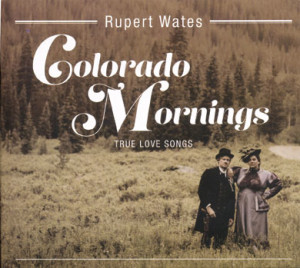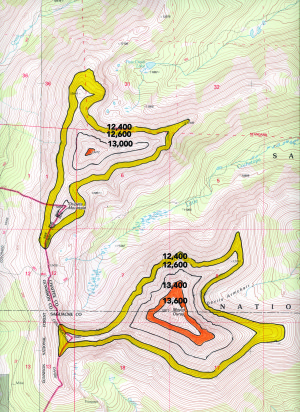By Christopher Kolomitz
Early 1920s improvements in the San Isabel National Forest west of Pueblo created a robust tourism industry and set the stage for national forest officials to consider a new era of recreation on public lands.
The creation of roads, camps and lodges on the San Isabel was special, and the advertising folks at railroads serving Pueblo understood the value of the scenic Western wonderlands. The railroads promoted travel by train to Pueblo and then via automobile into the San Isabel to fish, horseback ride, explore scenic landscapes and escape summer heat.
The San Isabel National Forest was created April 11, 1902 and its original boundary was from the Royal Gorge to the Spanish Peaks and west to the Sangre de Cristo range including the Great Sand Dunes. In July of 1908 acreage around the Wet Mountains west of Pueblo was added to the forest. Two years later, part of the old Las Animas National Forest disbanded and additional land around La Veta was added to the San Isabel. Parts of the old Cochetopa National Forest around Salida and Leadville were added to the San Isabel in 1944. In 1975, the Pike and San Isabel were combined administratively to become what is known today as the Pike-San Isabel National Forest.
Like on many national lands during the early 1900s, overuse and destruction didn’t skip the old San Isabel with its proximity to a booming Pueblo, which was swelling with immigrants and steel production. In 1913, forest officials documented clear-cutting, overgrazing, pollution and lawlessness in the forest.
Pressure increased in 1916 when a 26-mile road from Pueblo to Beulah was constructed. The road dead-ended at Squirrel Creek, the site which would eventually become a model for future recreational uses within the entire forest system. As it became apparent that automobiles were changing the way people accessed the forest, the original Squirrel Creek picnic shelters, fire pits and other improvements were built in 1919. Latrines were built at the campground, and a new roadway was constructed within Squirrel Creek Canyon.
Arthur H. Carhart, a young government “landscape engineer,” made it his work in the San Isabel to develop an interesting loop for visitors with roads, trails, lodges and auto camps. According to forest service archeologists who documented the Squirrel Creek improvements in 2004, the work of Carhart was the first of its kind in the forest service system. The improvements eventually led to the creation of design concepts that placed value on recreational opportunities upon public lands.
The Squirrel Creek area was additionally helped by the formation of the San Isabel Recreation Association, which was an offshoot of the Pueblo Commercial Club. Lacking government funds for many of the projects, the association became an important partner and was a forerunner of today’s public-private partnerships, which are so valuable to public land protection. As Squirrel Creek was being developed, Carhart used the association as an example of what private help could do within other parts of the state, like Fort Collins, Trinidad and Steamboat Springs.
In either 1919 or 1920, forest service photographs show 700 cars in the Squirrel Creek area on a Sunday in August. According to the Wet Mountain Tribune of June 25, 1920, the Missouri Pacific had dispatched an advertising manager from St. Louis by the name of M.L. Fuller to film portions of the San Isabel. Joining him were A.G. Hamel, the local forest service supervisor; W.I. Hutchinson, of the forest service information department in the Rocky Mountain region; and Willis H. Parker, the city editor of The Pueblo Chieftain. Other railroads like the Santa Fe, Rock Island and of course the Denver and Rio Grande were making promotional campaigns centered around the San Isabel too.
[InContentAdTwo]
A Missouri Pacific advertising pamphlet suggested automobile travel into the San Isabel from Pueblo using two competing companies – either the San Isabel Forest Tours Company (headquartered at the Congress Hotel and Vail Hotel) or the San Isabel Transportation Company on Main Street.
“Within the San Isabel National Forest can be found every form of landscape imaginable – new surprises not possessed by other mountain domains, to enchant and enthrall,” claimed the San Isabel Forest Tours Company. In 1922, that same company offered a one-day trip into the forest, which included auto travel and a meal for $14. A two-day “wonder” trip included auto transportation, meals and lodging for $30.
A “big four seat coach” was being used by the San Isabel Transportation Company in 1924 to shuttle customers via Hardscrabble (present day Hwy. 96) to the forest resorts near Westcliffe. The trip took about four hours and cost $4, the Wet Mountain Tribune reported.
In 1928, the Pueblo tour companies offered single-day tours starting at $8, which included a lunch. A two-day tour of the San Isabel was $31, which included two lunches and a room. For $2 extra, a room with a bath would be provided.
In addition to using the public campgrounds and other improvements in the forest, the tour companies were using the Baver Li Lodge along Squirrel Creek and Alpine Lodge near Westcliffe. Today, the Baver Li is a private home just off Hwy. 165 near Bishop’s Castle and Alpine Lodge is operating with a restaurant and cabins along C.R. 140 in Custer County. Also available for use to the traveling public in the San Isabel was the American Legion National Campground, built around 1924 west of Westcliffe, and Civilian Conservation Corps cabins ,built in about 1941.
Little of the heyday in Squirrel Creek is visible today, although some timbers, culverts and campsites remain. By 1946, forest officials were noting the deterioration of buildings and systems, and in 1947, a major flood took out 16 bridges along Squirrel Creek and closed the road for good. Fire destroyed what remained of a lodge building in 1979. However, some rock chimneys at Ophir and Davenport campgrounds near Hwy. 165 hold roots to an era largely forgotten. Examples of architecture from the period and a starting place for hiking along Squirrel Creek can also be found at Pueblo Mountain Park, just outside of Beulah.
Christopher Kolomitz is a freelance journalist and small business owner living in Salida. He remembers a summer hike along Squirrel Creek as a child and finding lush pockets of wild iris.


